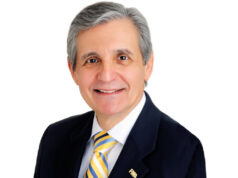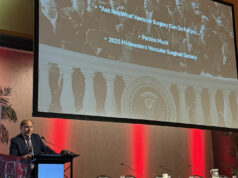“Get this thing out of my operating room! The colon stapling device exploded into pieces when I hurled it against the operating room wall.”
Most would assume that this must be a quote from an earlier era, when surgical icons ruled their surgical kingdoms and such behavior, especially by them, was tolerated. However, this quote was not unearthed from the surgical archives of an academic institution – instead, it comes from a recent best-selling autobiographical account by a surgeon who graduated from one of our esteemed residencies not too long ago. It reinforces the caricature of the intolerant surgeon, which is how many in America perceive us. Unfortunately, that caricature holds true in too many of our operating rooms.
During my years as a surgery department chair, I spent an inordinate amount of time dealing with operating room miscreants. I suspect that most surgery chairs or division chiefs, whether in academic or private institutions, have had a similar experience.
My disruptive surgeons represented a small minority of our surgical staff, but most were frequent repeat offenders. Some had minimal to no self-awareness and were not cognizant of their abusive behavior. Others felt bad about their inappropriate conduct but were incapable of correcting it. Bad behavior almost seemed to be embedded in their DNA.
After rather intensive and frequent counseling sessions, behavior would sometimes improve, but it was rarely sustained. These were always difficult conversations, because at times the offending party was a close friend, a prominent surgeon with well-placed and strongly supportive constituents, or a very busy surgeon in a highly profitable field who contributed significantly to the bottom line of departmental and hospital finances. What to do?
In late 2000 we formed a Professional Conduct Committee (a subcommittee of our Operating Room Committee) to address these recurring issues in surgery departments within our institution. Guidelines were written and submitted for approval to the Medical Board, the governing body of our medical staff. The committee members were to be appointed by the Operating Room Committee and would consist of three highly respected senior surgeons, two prominent senior anesthesiologists, and the nurse manager of the operating room. The formation of the committee and the accompanying guidelines were enthusiastically approved by the Medical Board.
Disruptive behavior was explicitly defined as verbal and/or physically threatening behavior, harassment in any form, demonstration of anger by destroying property or throwing instruments, and threats of retaliation as a result of learning that disruptive acts were reported.
To prevent retaliation, we developed a “Disruptive Behavior Report” form that allowed anonymous recounting of the incident. The first step of the process is submission of this form to the committee by the aggrieved individual and, after due diligence to protect the rights of the accused surgeon, the committee decides whether the complaint is justified. If justified, one or more members of the committee meet with the surgeon and remedial action such as anger management or counseling may be recommended to the surgeon and his or her department chair.
If disruptive behavior recurs or if the initial incident is particularly egregious, the next step is to require the accused surgeon to meet with the entire committee, along with his or her department chair, and to state a zero tolerance policy for further occurrences. If a repeat episode of disruptive behavior still occurs, the final stage is to send a written report from the committee to the president of the medical staff, the physician-in-chief, and the hospital CEO with a request for disciplinary action by the Medical Board. The disciplinary action can consist of a reprimand, probation, or reduction, suspension, or revocation of clinical privileges. In extreme cases, suspension or revocation of medical staff membership can be recommended.
In the 12 years since the formation of the Professional Conduct Committee and initiation of this policy, only a few surgeons have progressed through all three stages. None have had their clinical privileges permanently revoked, and none have lost their medical staff membership. Clearly, the fear of these consequences and of public discussion of their disruptive behavior before the Medical Board has been an effective deterrent. Although always kept in the information loop, surgical department chairs – with their inherent biases regarding their own faculty members – have been relieved of making the difficult disciplinary decisions that they generally avoided making in the past. They have all been complimentary about this new approach.
The working environment in our operating rooms has markedly improved. The congeniality quotient has increased, the fear of harassment or embarrassment has been reduced, and there is less turnover of OR personnel. If you do not have such a process in place in your institution, you might want to consider it. I think you will be impressed.n
Layton F. “Bing” Rikkers, M.D. is an emeritus professor at the University of Wisconsin and Editor in Chief of Surgery News, an Elsevier Publication.











